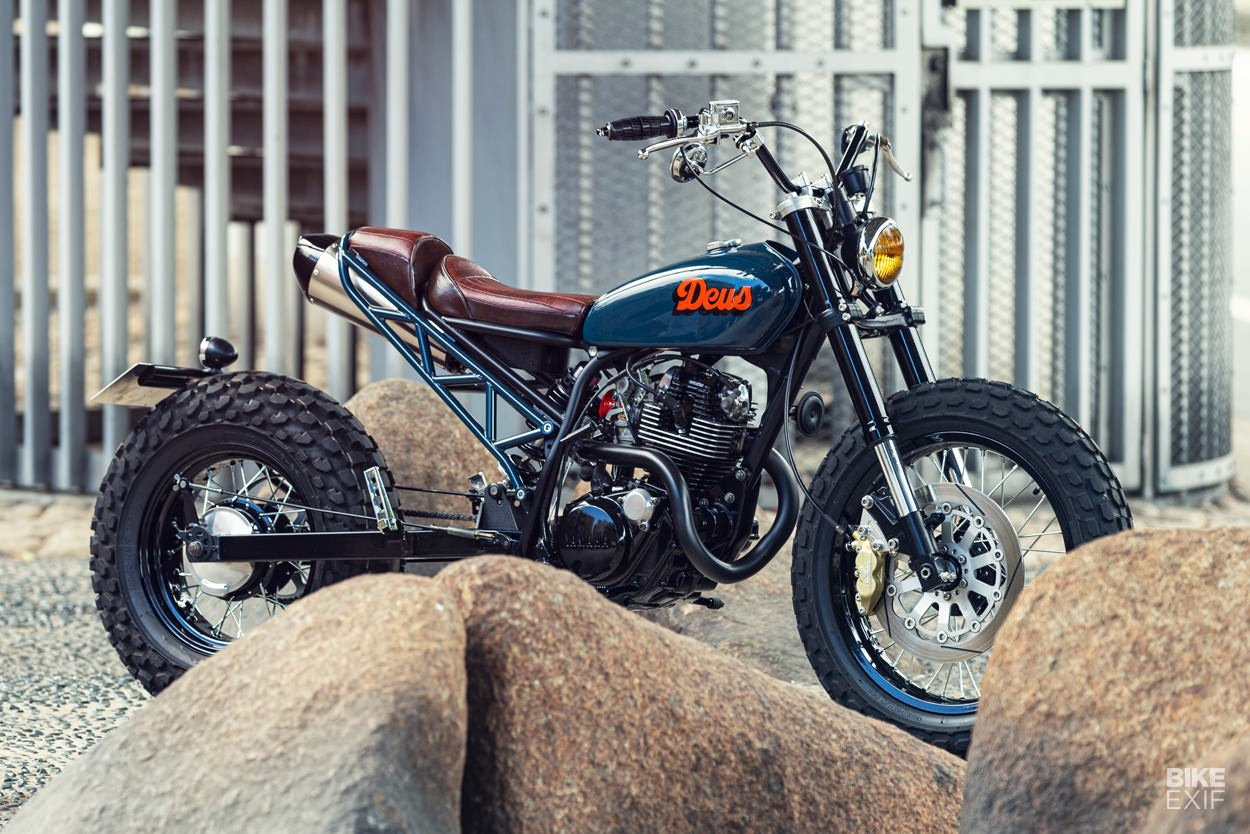
The Japanese have a profound love for motorsport and craftsmanship. Linguistic and geographic isolation has fostered unique styles and trends over the years, from the over-the-top Bōsōzoku bikes of the 80s and 90s to the minimalistic brat builds popularized by Go Takamine.
But there’s another, lesser-known custom genre that permeated the Land of the Rising Sun during the 90s: the ‘Suka-Tune’ style.

We’d never heard of it either. It takes its name from the Japanese word Sukeru—meaning ‘see-through’ or ‘transparent’—and Suka-Tune scoots were characterized by their stripped-down yet still functional nature. They borrowed traits from other genres to create utilitarian two-wheelers for the streets of Japan.
Though the genre’s popularity has declined over the last few decades, Tomoyuki Soeda, head wrench at Deus in Japan, has decided to return to the idiosyncratic and spartan street scramblers his latest one-off build.
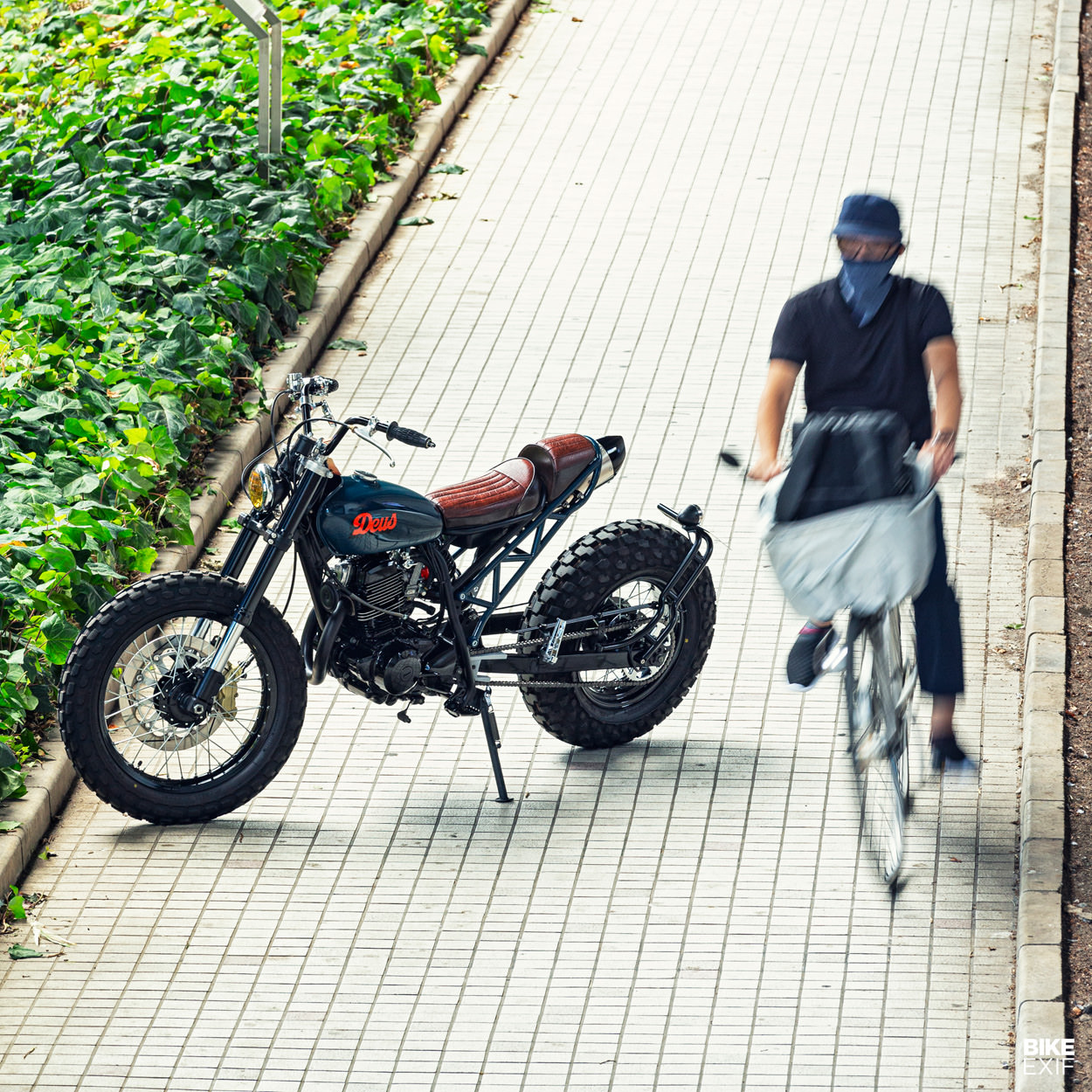
Called ‘Dirt Dauber,’ the project began its life as a 2002 Yamaha TW200—the undisputed platform of choice for ‘90s Suka-Tuners according to Soeda—before being stripped down to a rolling chassis.
In typical Suka-Tune fashion, the chassis, subframe, and just about everything else on the bike is on full display. The TW200 is devoid of any side panels, covers, or extraneous bodywork of any kind.
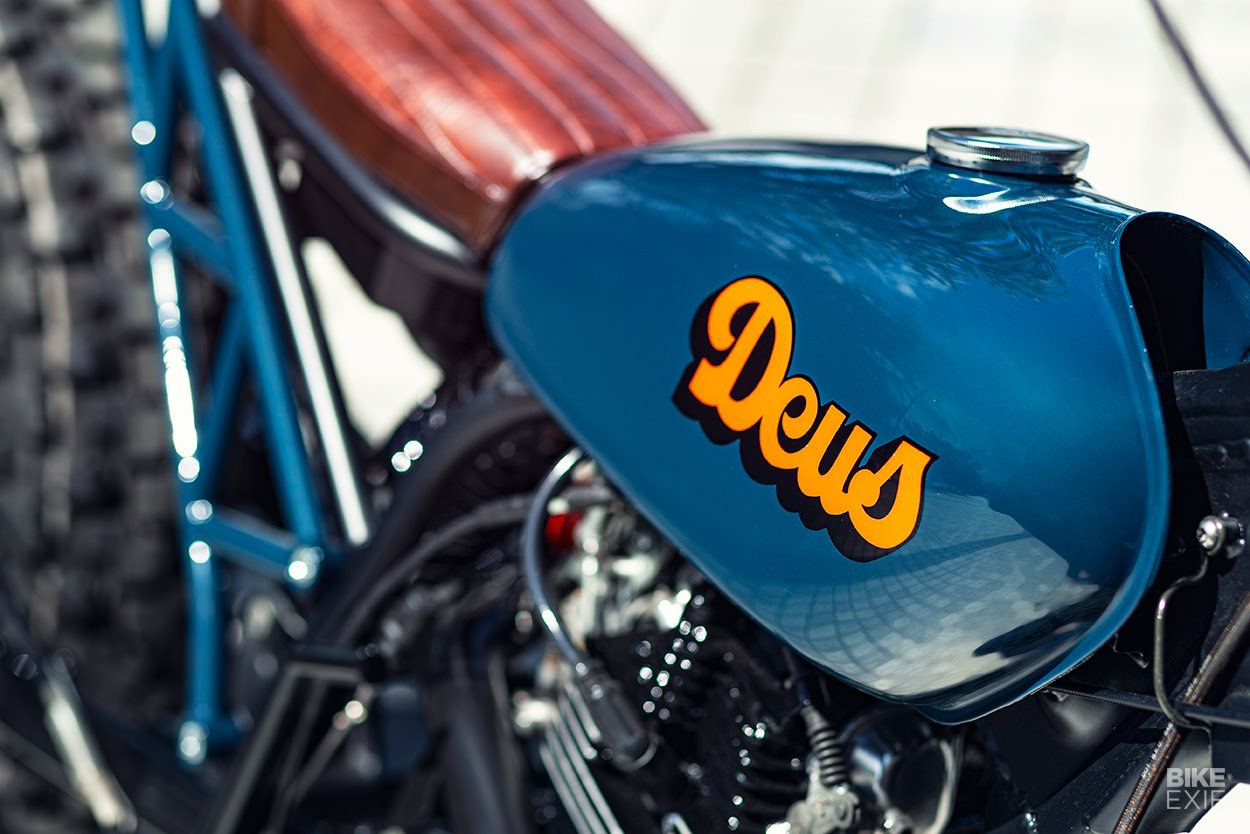
In a bid to bolster handling, the Trail Way’s budget-friendly suspension setup has been swapped out for a high-performance arrangement. An inverted GSX-R front-end is slotted into one-off triples, and an adjustable mono-shock is mated to a swingarm that’s been stretched by nearly 4” (or 10cm).
The Gixxer’s upside-down fork also comes with upgraded stopping power in the form of Brembo brakes with a 40mm caliper.
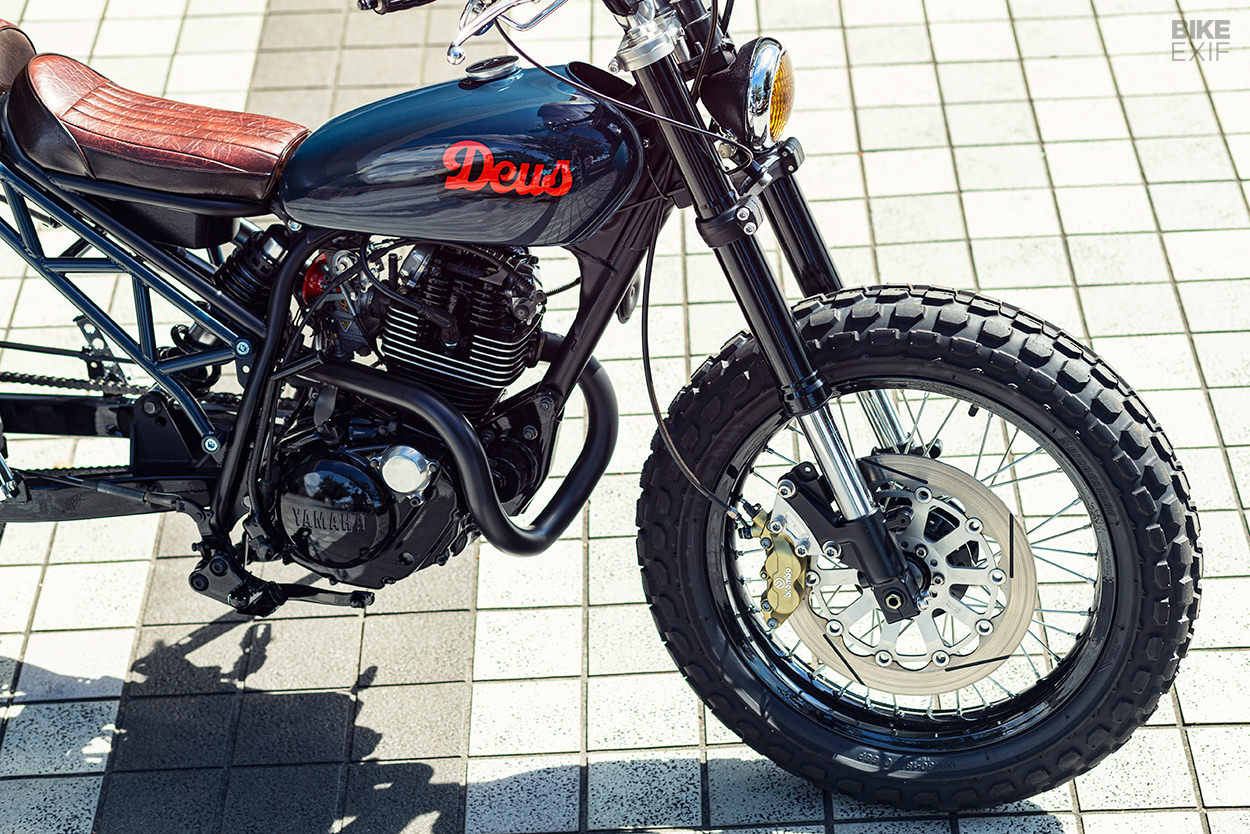
The most noteworthy addition to the big-wheeled single, however, is a new dual-subframe.
The bespoke framework includes a short subframe supporting the rider, while under/behind it is a custom trellis-style unit bolted onto the main chassis. This provides extra structural integrity to accommodate two-up travel.
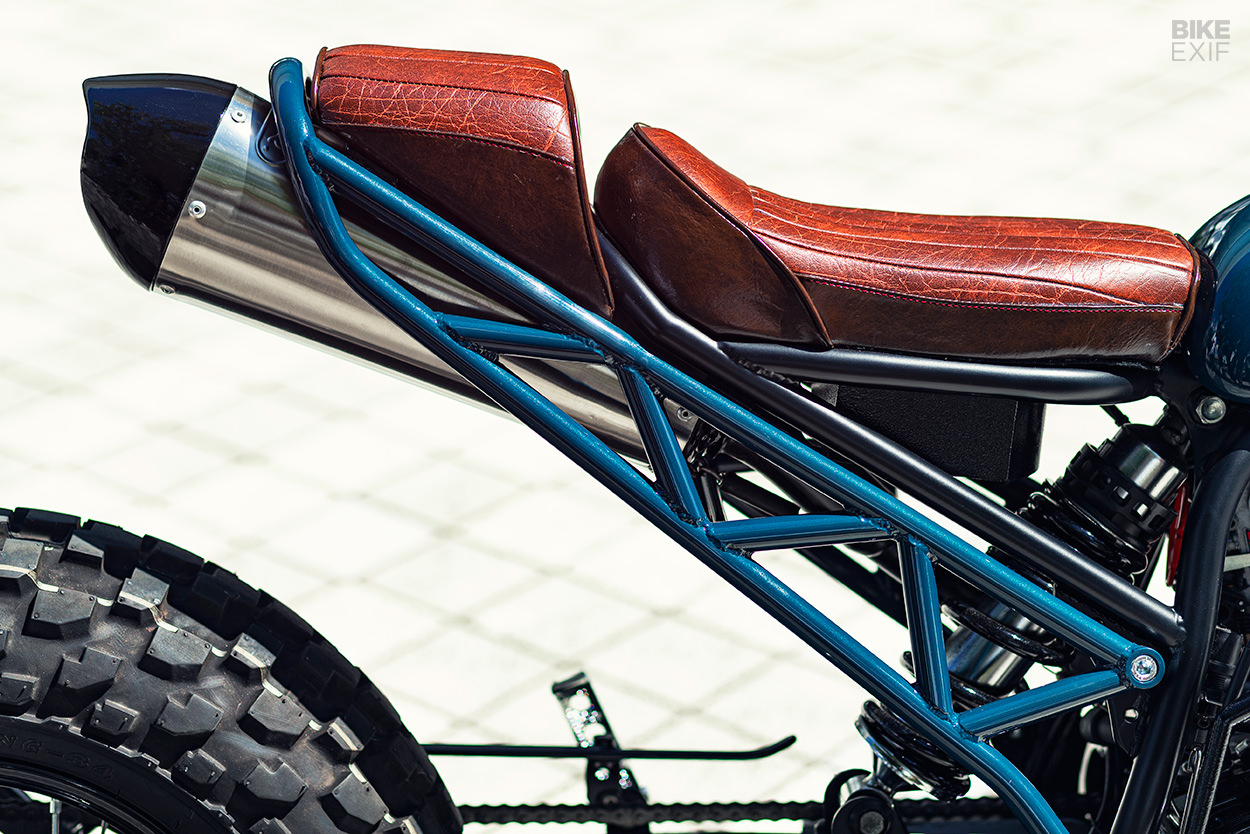
Both sections of the frame have been topped with a one-off seat made from a combination of smooth and distressed vintage leathers, with red accent stitching and brown piping.
Below the main seat is a discreetly hidden, wedge-shaped electronics box. Beneath the pillion is an Italian-made under-tail superbike muffler from GPR Exhausts. Though it follows a similar path to the stock component, the header on this TW200 is actually a custom part, and at the intake end is an FCR carb.
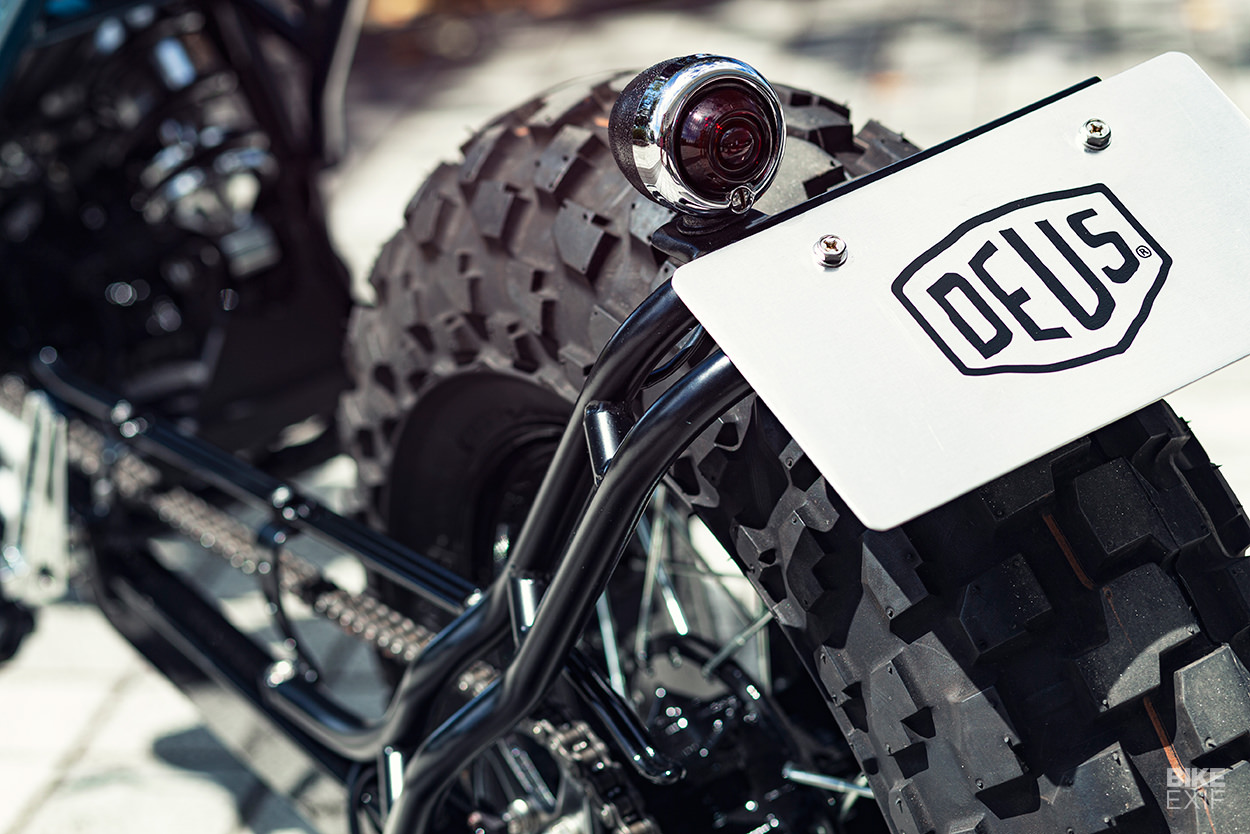
A trellis-style wraparound license-plate holder complements the trellis subframe, and the extended swing-arm has been equipped with a pair of industrial looking folding passenger foot-pegs.
The 196cc Japanese dual-sport has also been treated to an new cockpit. Gone are the stock handlebars, with a high-and-wide item off a 1960s CB450 now mounted on a set of risers before being outfitted with vintage-style switchgear and rubber grips. Motogadget m.blaze indicators poke out from both bar ends.
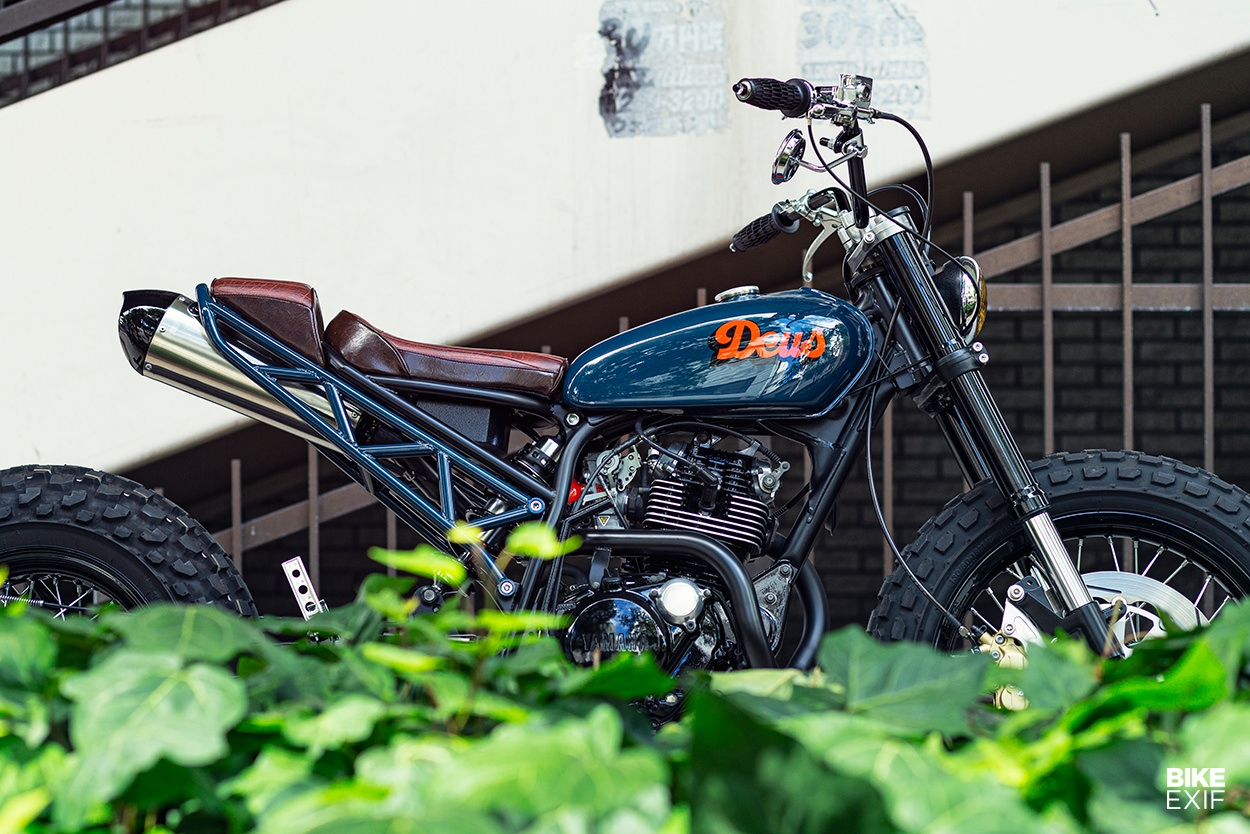
A simple tachometer now provides the Yamaha’s sole instrumentation, and there’s a single round mirror fixed to the right side of the bars to keep everything street legal.
The stocker’s small MX-style fuel cell was jettisoned in favor of a vintage item plucked off of a 1970s Yamaha trail bike donor, injecting some old-school flavor into an otherwise modern interpretation of a Suka-Tune build.
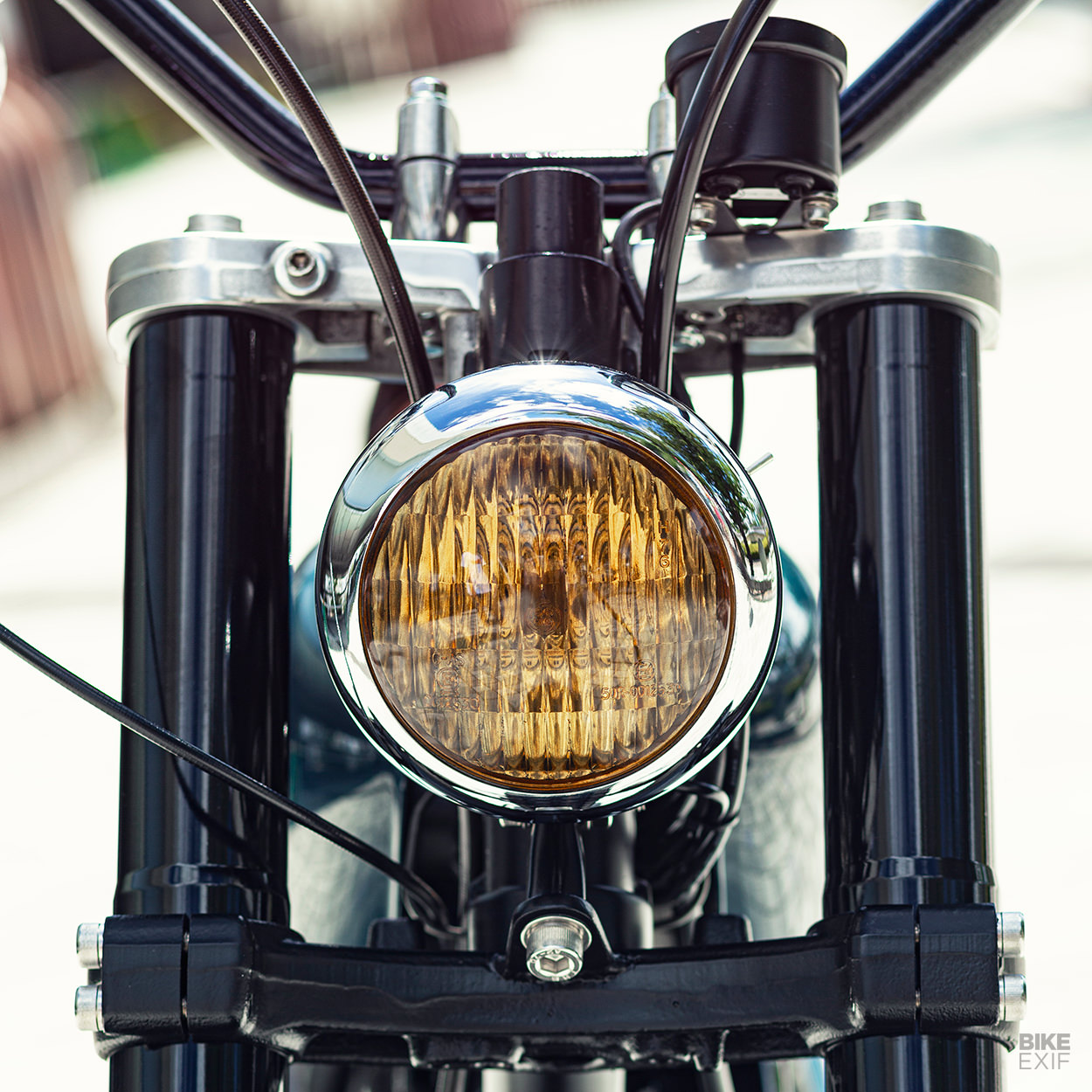
The vibe is further helped along by the addition of a classic round headlight with a yellow lens and an antique circular taillight. Tomoyuki also opted to maintain certain stock aspects of the build that happen to jive well with the rest of the custom work, with the TW200’s punched-out skid-plate and ultra-chunky Bridgestone Trail Wing rubber remaining in play.
The final piece of the puzzle was figuring out the livery. Looking for a way to subtly pay homage to early TW200 models, Soeda selected a deep royal blue livery juxtaposed by a bright orange ‘Deus’ script logo.
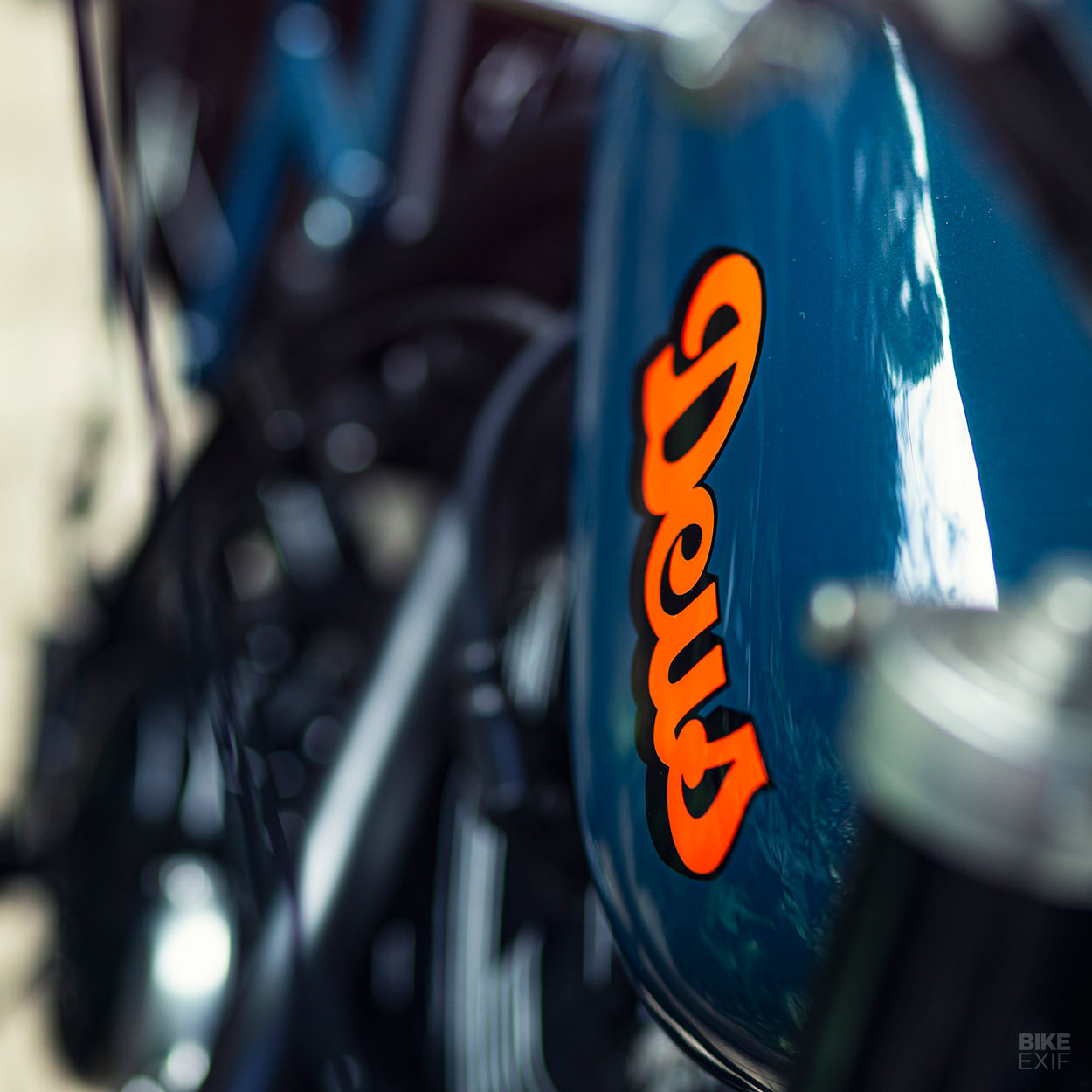
This contemporary re-imagining of the TW’s 1989 paint also includes a matching blue passenger subframe. The rest of the bike sports a combination of gloss and matte black components, plus a dash of bare metal—from the muffler, fork lowers, spokes, and cooling fins.
As the custom motorcycle world expands, it’s become increasingly difficult to build something that stands out as unique. But Soeda and his team have managed to do exactly that—and in spades.
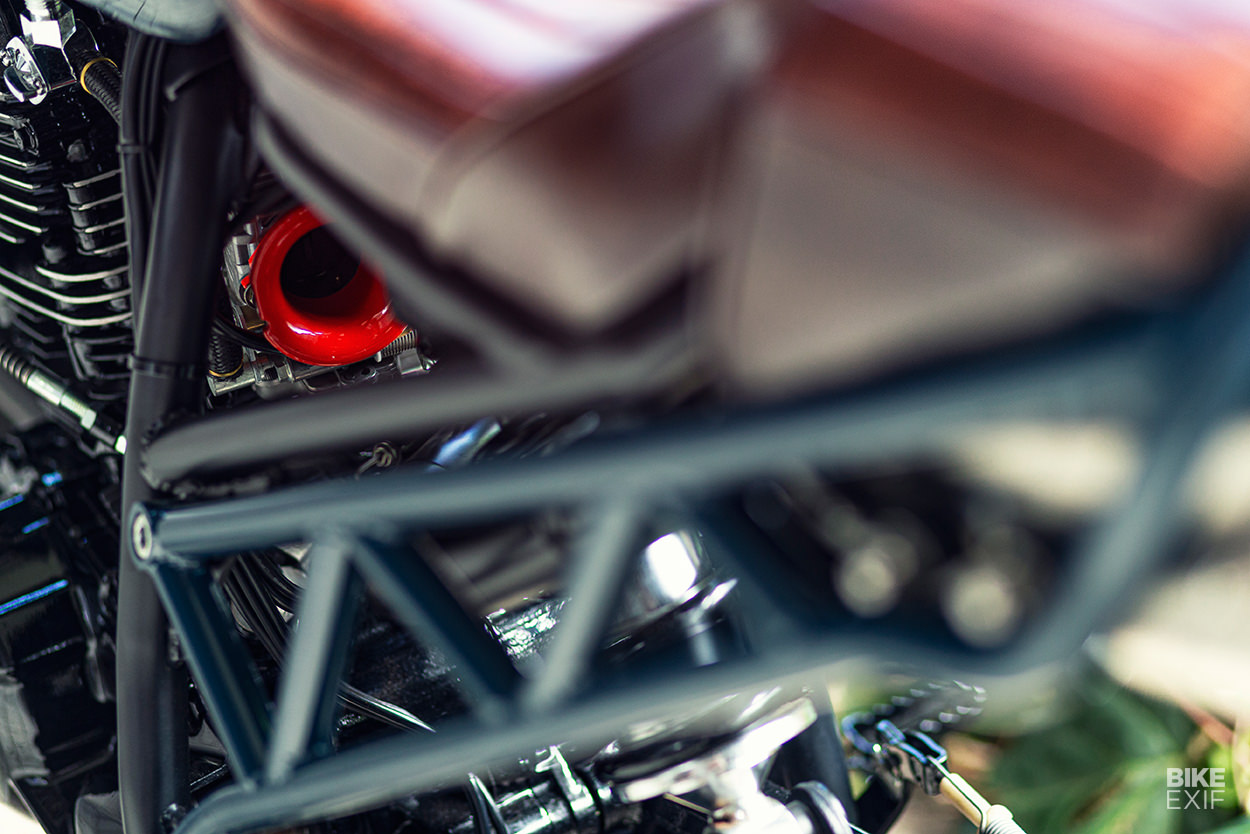
Like a fine piece of art, the longer you spend taking in this build, the more the minor details jump out at you.
It may not share the same recognizable appeal as traditional scramblers or cafe racers, but the Suka-Tune genre is a style we hope to see much more of in the future.
Deus Japan | Facebook | Instagram | Images by Toyohiro Zenita
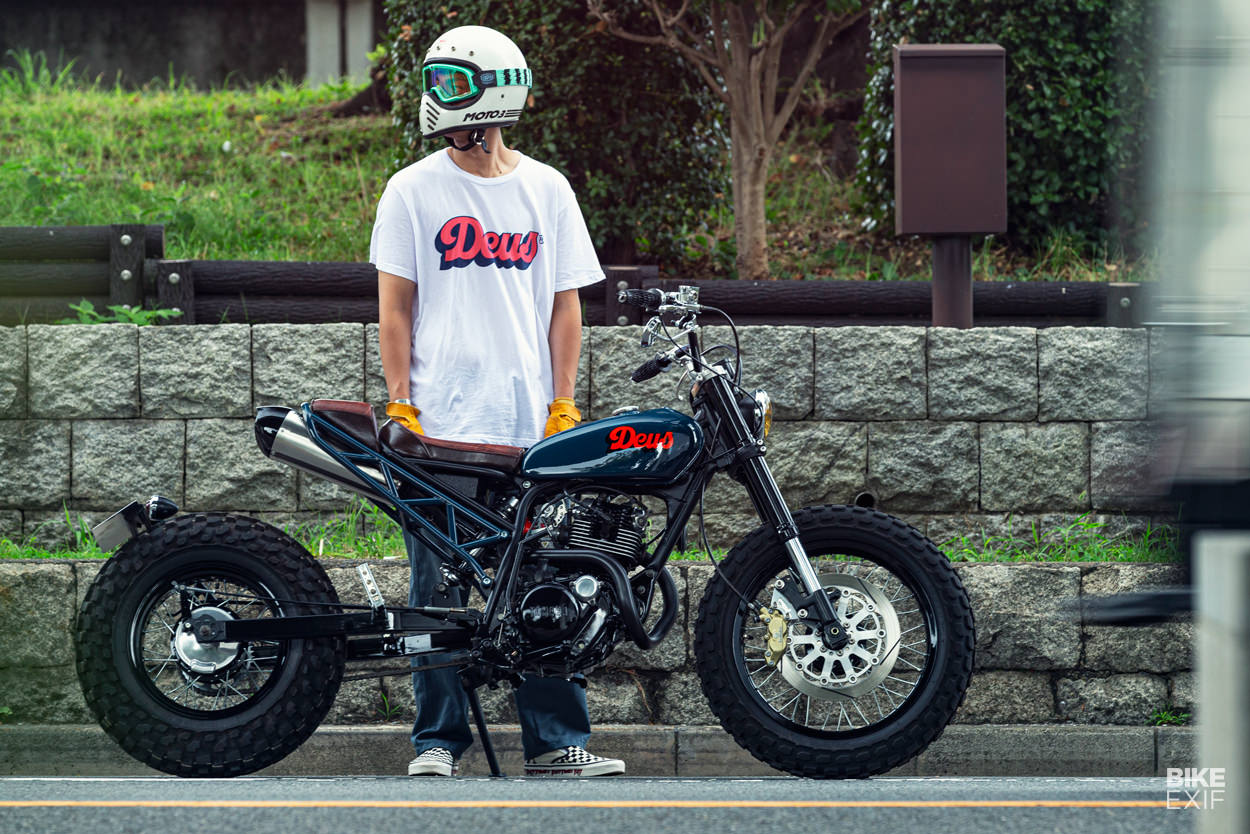
from Bike EXIF https://ift.tt/3nPHXfc
No comments:
Post a Comment